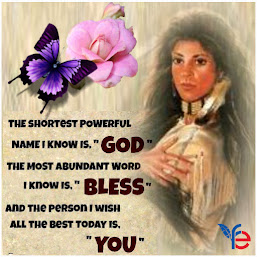
A blue moon is when two full moons occur around the same time and really has nothing to do with the moon's shading.
Lunar obscurations happen when the moon goes into Earth's shadow, and supermoons happen when the full moon occurs in the meantime the moon is nearest to Earth in its circle.
Three Major Celestial Events Happening At Once
On Jan. 31, every one of the three of these heavenly occasions will occur in the meantime. While the blue moon and the lunar shroud will happen on Jan. 31, the supermoon will really occur on Jan. 30.
The Moon Will Actually Look Red—Not Blue
As specified before, the term blue moon applies to the quantity of full moons in a specific period as opposed to its shading. Rather, a lunar overshadowing will really wind up giving the moon a red or orange tone.
"Daylight is a vitality that movements in waves. A wavelength is the separation between the highest points of the waves. Daylight has a scope of wavelengths, some of which are unmistakable hues. Each shading has an alternate wavelength. Violet has the most brief wavelength and red has the longest. At the point when the majority of the waves are as one, for example, when they go in space, the light is white. At the point when white light goes through an air, it can be separated into noticeable hues and different wavelengths.

Amid an aggregate lunar obscuration, white daylight hitting the environment on the sides of the Earth gets consumed and afterward emanated out (scattered). Blue-shaded light is generally influenced. That is, the climate sift through (diffuses away) the vast majority of the blue-hued light. What's left finished is the orange-and red-hued light. This red-shaded light goes through our climate without getting consumed and scattered, before the environment twists it (refracts it) retreat, anticipating backhanded, rosy light onto the Moon."
Step by step instructions to Catch The Super Blue Moon Eclipse
Lamentably, simply taking a gander at the sky on Jan. 31 won't ensure a perspective of the lunar overshadowing. The easternmost piece of the U.S. will have the capacity to see the finish of the shroud at around 6:48 a.m. EST, yet the occasion will most effectively be seen on the western side of the nation, as indicated by Space.com.
In case you're in the Chicago region, you will have the capacity to get an impression and see the dark red shade of the moon as it enters totality at 6:16 a.m. In California? You'll get a decent perspective of totality, with the aggregate stage beginning at 4:51 a.m. what's more, finishing at 6:07 a.m. Any individual who lives outside of the 48 touching states is in good fortune, as Alaska and Hawaii will have the best perspectives in the U.S.
Albeit 1866 was the last time this fantastic occasion happened, you won't need to hold up too long on the off chance that you miss it this year — there will be another Dec. 31, 2028.
Source
January Moon Names: Man Moon (Taos). Euphoric Moon (Hopi). Avunniviayuk (Inuit). Very Moon (Celtic). Ice Moon (San Juan). Cool Moon (Cherokee). Ice Moon (Neo-Pagan). Flying Ant Moon(Apache). Enormous Cold Moon (Mohawk). Cooking Moon (Choctaw). Solid Cold Moon (Sioux). Little Winter Moon (Creek). Her Cold Moon (Wishram). Icy Meal Moon (Natchez). Moon After Yule (Cherokee). Wolf Moon (Medieval English). Solid Cold Moon (Cheyenne). Calm : Dark, Wolf : Full (Janic). Incredible Spirit Moon (Anishnaabe). Spinning Wind Moon (Passamaquoddy). Wolf Moon, Old Moon, Winter Moon, Yule Moon (Algonquin).
If You Enjoyed This, Take 5 Seconds To Share It
 A blue moon is when two full moons occur around the same time and really has nothing to do with the moon's shading.
Lunar obscurations happen when the moon goes into Earth's shadow, and supermoons happen when the full moon occurs in the meantime the moon is nearest to Earth in its circle.
Three Major Celestial Events Happening At Once
On Jan. 31, every one of the three of these heavenly occasions will occur in the meantime. While the blue moon and the lunar shroud will happen on Jan. 31, the supermoon will really occur on Jan. 30.
The Moon Will Actually Look Red—Not Blue
As specified before, the term blue moon applies to the quantity of full moons in a specific period as opposed to its shading. Rather, a lunar overshadowing will really wind up giving the moon a red or orange tone.
"Daylight is a vitality that movements in waves. A wavelength is the separation between the highest points of the waves. Daylight has a scope of wavelengths, some of which are unmistakable hues. Each shading has an alternate wavelength. Violet has the most brief wavelength and red has the longest. At the point when the majority of the waves are as one, for example, when they go in space, the light is white. At the point when white light goes through an air, it can be separated into noticeable hues and different wavelengths.
A blue moon is when two full moons occur around the same time and really has nothing to do with the moon's shading.
Lunar obscurations happen when the moon goes into Earth's shadow, and supermoons happen when the full moon occurs in the meantime the moon is nearest to Earth in its circle.
Three Major Celestial Events Happening At Once
On Jan. 31, every one of the three of these heavenly occasions will occur in the meantime. While the blue moon and the lunar shroud will happen on Jan. 31, the supermoon will really occur on Jan. 30.
The Moon Will Actually Look Red—Not Blue
As specified before, the term blue moon applies to the quantity of full moons in a specific period as opposed to its shading. Rather, a lunar overshadowing will really wind up giving the moon a red or orange tone.
"Daylight is a vitality that movements in waves. A wavelength is the separation between the highest points of the waves. Daylight has a scope of wavelengths, some of which are unmistakable hues. Each shading has an alternate wavelength. Violet has the most brief wavelength and red has the longest. At the point when the majority of the waves are as one, for example, when they go in space, the light is white. At the point when white light goes through an air, it can be separated into noticeable hues and different wavelengths. Amid an aggregate lunar obscuration, white daylight hitting the environment on the sides of the Earth gets consumed and afterward emanated out (scattered). Blue-shaded light is generally influenced. That is, the climate sift through (diffuses away) the vast majority of the blue-hued light. What's left finished is the orange-and red-hued light. This red-shaded light goes through our climate without getting consumed and scattered, before the environment twists it (refracts it) retreat, anticipating backhanded, rosy light onto the Moon."
Step by step instructions to Catch The Super Blue Moon Eclipse
Lamentably, simply taking a gander at the sky on Jan. 31 won't ensure a perspective of the lunar overshadowing. The easternmost piece of the U.S. will have the capacity to see the finish of the shroud at around 6:48 a.m. EST, yet the occasion will most effectively be seen on the western side of the nation, as indicated by Space.com.
In case you're in the Chicago region, you will have the capacity to get an impression and see the dark red shade of the moon as it enters totality at 6:16 a.m. In California? You'll get a decent perspective of totality, with the aggregate stage beginning at 4:51 a.m. what's more, finishing at 6:07 a.m. Any individual who lives outside of the 48 touching states is in good fortune, as Alaska and Hawaii will have the best perspectives in the U.S.
Albeit 1866 was the last time this fantastic occasion happened, you won't need to hold up too long on the off chance that you miss it this year — there will be another Dec. 31, 2028.
Source
January Moon Names: Man Moon (Taos). Euphoric Moon (Hopi). Avunniviayuk (Inuit). Very Moon (Celtic). Ice Moon (San Juan). Cool Moon (Cherokee). Ice Moon (Neo-Pagan). Flying Ant Moon(Apache). Enormous Cold Moon (Mohawk). Cooking Moon (Choctaw). Solid Cold Moon (Sioux). Little Winter Moon (Creek). Her Cold Moon (Wishram). Icy Meal Moon (Natchez). Moon After Yule (Cherokee). Wolf Moon (Medieval English). Solid Cold Moon (Cheyenne). Calm : Dark, Wolf : Full (Janic). Incredible Spirit Moon (Anishnaabe). Spinning Wind Moon (Passamaquoddy). Wolf Moon, Old Moon, Winter Moon, Yule Moon (Algonquin).
If You Enjoyed This, Take 5 Seconds To Share It
Amid an aggregate lunar obscuration, white daylight hitting the environment on the sides of the Earth gets consumed and afterward emanated out (scattered). Blue-shaded light is generally influenced. That is, the climate sift through (diffuses away) the vast majority of the blue-hued light. What's left finished is the orange-and red-hued light. This red-shaded light goes through our climate without getting consumed and scattered, before the environment twists it (refracts it) retreat, anticipating backhanded, rosy light onto the Moon."
Step by step instructions to Catch The Super Blue Moon Eclipse
Lamentably, simply taking a gander at the sky on Jan. 31 won't ensure a perspective of the lunar overshadowing. The easternmost piece of the U.S. will have the capacity to see the finish of the shroud at around 6:48 a.m. EST, yet the occasion will most effectively be seen on the western side of the nation, as indicated by Space.com.
In case you're in the Chicago region, you will have the capacity to get an impression and see the dark red shade of the moon as it enters totality at 6:16 a.m. In California? You'll get a decent perspective of totality, with the aggregate stage beginning at 4:51 a.m. what's more, finishing at 6:07 a.m. Any individual who lives outside of the 48 touching states is in good fortune, as Alaska and Hawaii will have the best perspectives in the U.S.
Albeit 1866 was the last time this fantastic occasion happened, you won't need to hold up too long on the off chance that you miss it this year — there will be another Dec. 31, 2028.
Source
January Moon Names: Man Moon (Taos). Euphoric Moon (Hopi). Avunniviayuk (Inuit). Very Moon (Celtic). Ice Moon (San Juan). Cool Moon (Cherokee). Ice Moon (Neo-Pagan). Flying Ant Moon(Apache). Enormous Cold Moon (Mohawk). Cooking Moon (Choctaw). Solid Cold Moon (Sioux). Little Winter Moon (Creek). Her Cold Moon (Wishram). Icy Meal Moon (Natchez). Moon After Yule (Cherokee). Wolf Moon (Medieval English). Solid Cold Moon (Cheyenne). Calm : Dark, Wolf : Full (Janic). Incredible Spirit Moon (Anishnaabe). Spinning Wind Moon (Passamaquoddy). Wolf Moon, Old Moon, Winter Moon, Yule Moon (Algonquin).
If You Enjoyed This, Take 5 Seconds To Share It



0 Comments